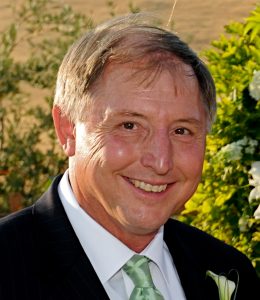Lloyd Hackel
Curtiss-Wright Corporation - Metal Improvement Company
Seminar Information
Engineering Building Unit 2 (EBU2)
Room 584
Seminar Recording Available: Please contact seminar coordinator, Jake Blair at (j1blair@ucsd.edu)

Originally conceived by Fairand and Clauer at Battelle Labs in Ohio and greatly extended in understanding in France by Professor Remy Fabbro and his students, laser peening became a robust industrial process with development at the Lawrence Livermore National Lab of a phase conjugated Nd:glass laser configured as a master oscillator power amplifier with stimulated Brillouin wavefront correction. Wavefront correction is especially important to enable instant startup and sustained operation at 20 J/pulse, 10 to 30 ns pulse duration and fire on demand pulse repetition rate at up to 5 Hz. Applications have included improving operational lifetime for jet engine fan blades that power the Boeing 777, 787 Dreamliner, the Airbus A340, XWB and Gulfstream G550 and G650 aircraft, blades for all OEM of gas and steam turbines and forming curvature in wing panels for all 747-8 aircraft. The technology was employed to eliminate potential structural failures on the F-22 and now on the F-35 including use of a three-robot configuration to peen non-line of sight structure inside of existing F-35 B and C aircraft. More recent work has focused on generating microstructure changes that increase material yield strength and improve lifetime of superalloys and slows hydrogen penetration and thus hydrogen embrittlement failure of steels and titanium alloys. The presentation will focus on the fundamentals of the laser design, the generation of pressure waves just above the Hugoniot Elastic Limit and microstructural changes induced in materials as a new way to improve operational lifetimes of metals in corrosive and high temperature environments.
Dr. Lloyd Hackel is Vice President for Advanced Technologies of Curtiss-Wright’s Metal Improvement Company. This followed a 28-year career at the Lawrence Livermore National Laboratory (LLNL) where in his last position he headed the Program for Laser Science and Technology reporting to the Lab Associate Director. Lloyd received a BS in Applied Mathematics and Engineering Physics from the University of Wisconsin, Madison in 1971 and a Masters of Science degree in 1973 and a year later the Doctor of Science degree in 1974 from the Massachusetts Institute of Technology (MIT). He is co-inventor of the laser used by Curtiss-Wright for commercial laser peening. His work at MIT focused on the development of frequency stable lasers for use in high resolution spectroscopy, as atomic clocks and gravity wave sensors.
Lloyd was a co-inventor of the laser system and leader of what is now the laser peening technology deployed by Curtiss-Wright’s Metal Improvement Company. He is the author of numerous scientific publications and inventor or co-inventor of over 20 US and foreign patents. He has been awarded five internationally recognized R&D 100 awards for innovative technology development, was recognized as a Distinguished Alumni of the University of Wisconsin- Madison Physics Department and was awarded three Federal Laboratory Consortium Awards by the US Department of Energy for excellence in technology transfer to industry. Lloyd was elected to the LLNL Innovator’s Hall of and serves as a member and has been Chairman of the Visitor Advisory Board for the University of Wisconsin Physics Department.
